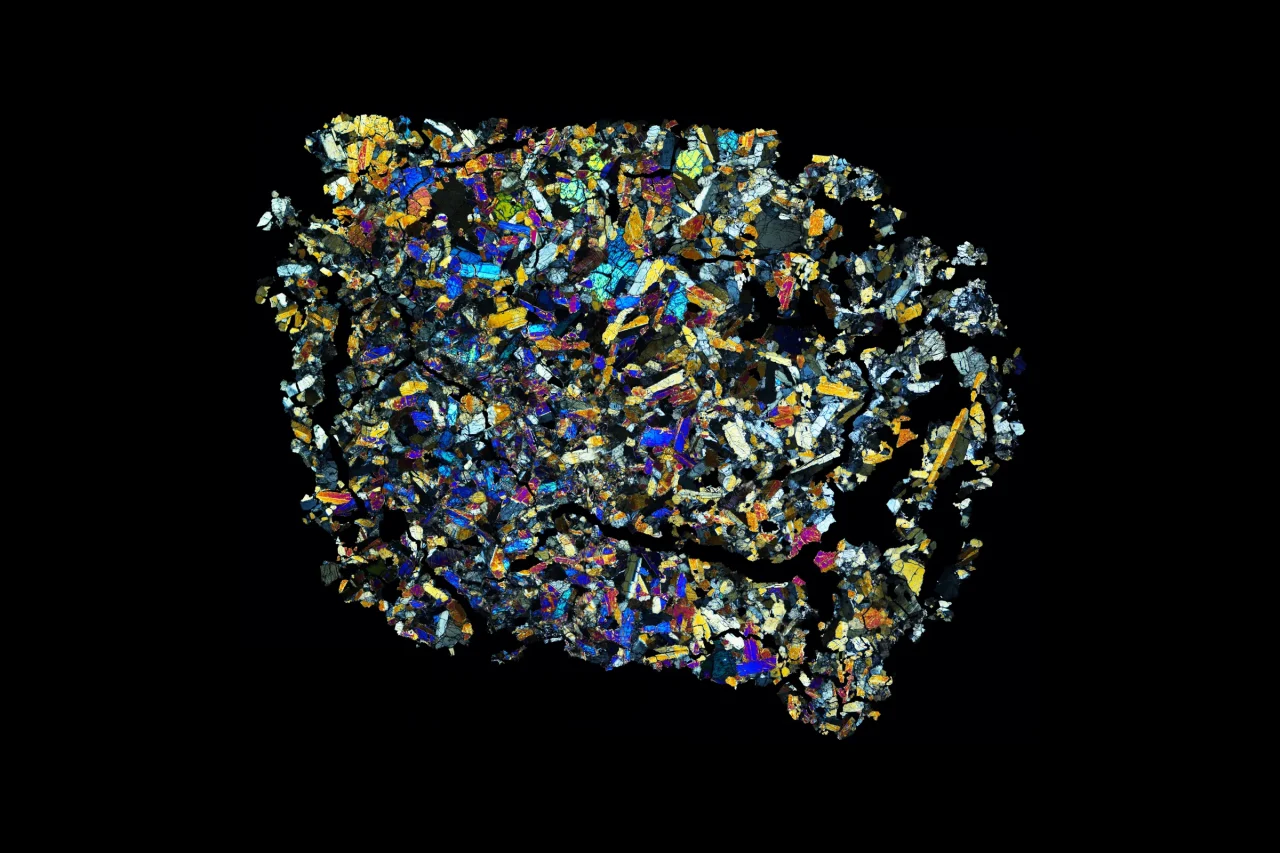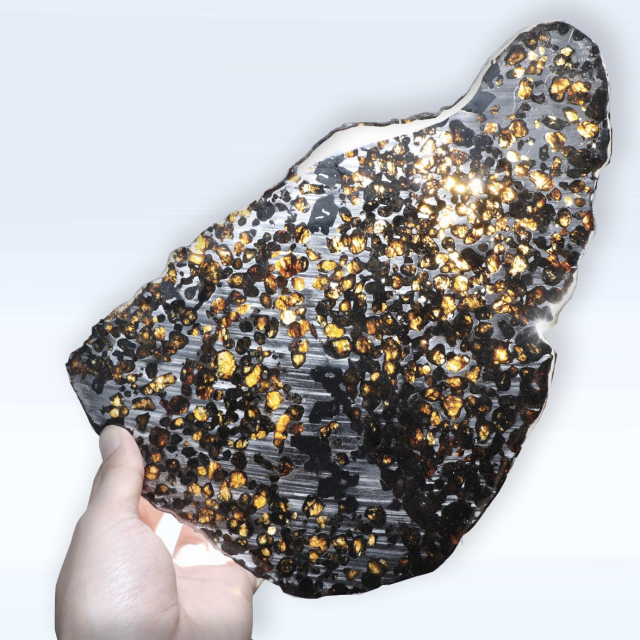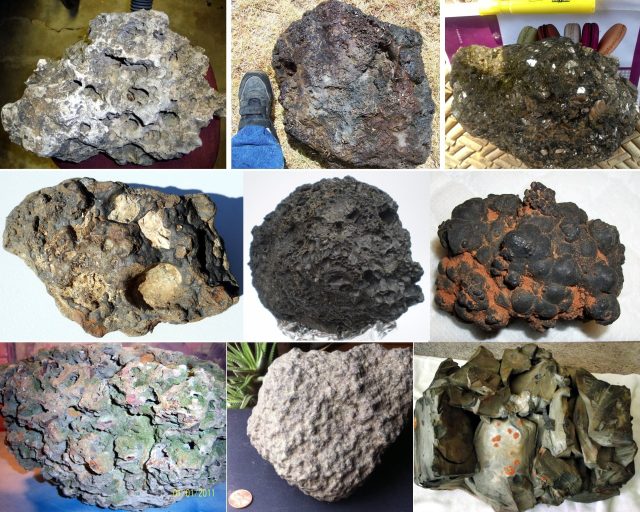Meteorites and Connections in the Gemstone Industry

I. Introduction
1. Definition and classification of meteorites
Meteors are defined as celestial bodies that fall to the earth’s surface from space. There are 3 main types of meteorites:
– Aerolite: composed mainly of rock and silicate
– Stone meteorite: stone-iron mixture, containing silicate rocks and iron and nickel compounds
– Iron meteorites: composed mainly of iron and nickel compounds (>90% iron-nickel)
Classification is based on chemical and mineralogical composition, characterized by the prominent presence of magnesium iron silicates or iron and nickel compounds.
2. Structure and texture of meteorites
Aerolite has a silicate rock structure, usually olivine, pyroclast, plagioclac. There are iron-nickel metal particles.
Stony meteorites and iron meteorites have a more complex structure, consisting of prismatic or cluster-shaped iron silicate crystals; alternating metal compounds (Fe-Ni alloy, troilite).
There are also veins of carbonate minerals, phyllosilicates and simple organic compounds.
3. Geological processes form gemstones
Gemstones are formed under conditions of extremely high temperature and pressure from the melting of minerals rich in silicates, aluminum, and calcium deep in the earth. Main process groups:
Volcanic activity – magma penetrates at great depths
Regional metamorphism due to the impact of fault zones
4. The local redox process creates a reducing environment
Leads to crystal precipitation of minerals with characteristic colors such as ruby, safia, and emerald.
Extreme physical conditions form gems in celestial bodies
In asteroids or small-sized bodies, temperature and pressure conditions can reach thousands of degrees Celsius and tens of thousands of atmospheres.
Strong collisions cause rapid heating, along with radioactive decay of unstable elements such as Uranium and Thorium, causing melting and recrystallization.
This allows silicate minerals to crystallize into colored, gemstones in microcrystalline form.
II. Groups of meteorites contain gems
1. Pallasite
The main component is olivine (peridot) in an iron-nickel alloy base
Typical structure: cm-sized olivine crystals located in an iron-nickel matrix
Olivine crystallizes from the slow cooling of magma that is super rich in iron and manganese
Allows olivine to crystallize to high transparency, creating rare quality peridot
2.Ureilite
Chemical composition: basalt is super rich in carbon, has olivine, pyrope, and iron metals
Fine-grained microcrystalline structure, grain size less than 1 mm
High temperature conditions and thermal shock lead to the decomposition of colored minerals such as pyrop into red rocks (ruby, red sapphire).
3.Carbonaceous chondrite
Contains carbon in various forms, including diamond and allotropic forms of carbon
The environment is rich in hydrocarbons and strong radioactivity from Uranium and Thorium, which rapidly heats up thousands of degrees Celsius
Facilitates the phase transition of carbon-rich minerals, including diamond formation.
4.Shergottite (Mars)
The composition is similar to Earth’s basalt, containing olivine and pyrope rich in iron and magnesium
Exists in microcrystalline form in rocks of volcanic origin, similar to kimberlite containing gems on Earth
Shows the possibility of rare colored stones on Mars like rubies and rubies on Earth.
5. Estimated gem reserves in some types of meteorites
Pallasite: hundreds of kilograms of olivine (peridot) in large samples
Ureilite: several kilograms of ruby/red sapphire in total mass of ureilite
Carbon chondrite: can have hundreds of carats of microscopic diamonds
Shergottite: unknown amount of gemstone, possibly equivalent to rare earth mines.
III. Origin and movement of meteorites rich in rare minerals

The origin of meteorites is rich in rare minerals
There are many theories about the origin of meteorites rich in rare minerals. Some theories suggest that they originate from planets, asteroids or comets.
Hypothesis of origin from the Earth’s core
This hypothesis holds that kimberlites originate from the Earth’s core. Volcanic eruptions pushed fragments of the Earth’s core to the Earth’s surface. These fragments often contain diamonds, rubies and other precious stones.
Hypothesis of origin from asteroids
This hypothesis holds that ureilite and pallasite originated from asteroids. Asteroid collisions have created debris containing rare minerals. These fragments then fell into Earth’s orbit and collided with the Earth’s surface.
Physical and chemical evidence points to an asteroid or planetary origin
There is much physical and chemical evidence indicating that meteorites rich in rare minerals originate from asteroids or planets.
About isotopic composition
The isotopic composition of meteorites rich in rare minerals is similar to the isotopic composition of asteroids and planets. This suggests that these meteorites originated from objects in the solar system.
About orbit
The orbits of meteorites rich in rare minerals are similar to those of asteroids and planets. This also suggests that these meteorites originated from objects in the solar system.
About chronology
The chronology of meteorites rich in rare minerals is similar to the chronology of asteroids and planets. This also suggests that these meteorites originated from objects in the solar system.
Detailed scenario of the collision, explosion and fragmentation of parent celestial bodies
Collisions between asteroids or planets can produce debris containing rare minerals. These fragments could then fall into Earth’s orbit and collide with the Earth’s surface.
Below is a detailed scenario of the collision, explosion and fragmentation of the parent celestial bodies:
Collision
An asteroid or planet can collide with another asteroid or planet at high speed. This collision can create a powerful explosion.
Explosion
The explosion can partially melt and vaporize the impacting objects. These melted and evaporated materials can condense into fragments.
Splatter
Debris can be ejected from the collision at high speeds. These debris can fall into Earth’s orbit.
Collision with Earth
Debris can impact the Earth’s surface at high speed. This collision could create an impact crater
IV. Significance and potential application in the gemstone industry

Meteorites rich in rare minerals have great significance and application potential in the gemstone industry.
Rarity
The gems found in meteorites are very rare. They are only found in certain types of meteorites and are available in limited quantities. This makes them highly valuable in the market.
Exceptional value
Gemstones found in meteorites often have unique colors and purity. This makes them more valuable than gemstones originating from Earth.
Application potential
Gemstones found in meteorites can be used for jewelry, fine arts, and other purposes. They can also be used for scientific research purposes, such as studying the origin and formation of the universe.
Estimated reserves of precious stones in meteorites
In fact, it is difficult to estimate the reserves of precious stones contained in meteorites. This is because meteorites are rare and difficult to collect.
However, based on statistics from meteorites that have been collected, it can be estimated that meteorites may contain large reserves of rare gemstones, such as diamonds, blue diamonds, and pink diamonds. jade, safir and emerald.
Analyze the potential economic value of meteorites rich in rare minerals
The potential economic value of meteorites rich in rare minerals is huge. This is because the gems contained in meteorites are very rare and highly valuable in the market.
For example, a 1-carat blue diamond can be worth millions of dollars. A 1-carat ruby can be worth hundreds of thousands of dollars.
Develop scenarios for commercial exploitation and processing of gemstones from meteorites in the future
The commercial mining and processing of gemstones from meteorites is a rapidly growing new field.
There are two proposed meteorite gem mining scenarios:
Mining from meteorites falling to Earth: This is the simplest mining method. However, this method has a limitation: the number of meteorites falling to Earth is very small.
Mining from meteorites in space: This is a more complex mining method, requiring the use of advanced technology. However, this method has the advantage of being able to mine a large amount of gems.
Analyze cost-benefit factors to evaluate the economic feasibility of mining gems from meteorites
The economic feasibility of mining gems from meteorites depends on many factors, including:
Gem reserves in meteorites: The larger the gem reserves, the higher the economic feasibility.
Value of gemstones: The higher the value of gemstones, the higher the economic feasibility.
Mining and processing costs: The lower the mining and processing costs, the higher the economic feasibility.
Up to now, mining gems from meteorites has not been done commercially. However, with the development of advanced technologies, mining gems from meteorites in the future is completely feasible.
V. Legal and ethical issues surrounding extraterrestrial gem resources
Current international legal documents govern the exploitation of resources from outer space
Currently, there is no international legal document specifically regulating the exploitation of resources from outer space. However, there are a number of international legal documents that can be applied to this activity, including:
Convention on Principles Regulating the Activities of States in the Research and Use of Outer Space, Including the Moon and Other Celestial Bodies (Outer Space Convention): This Convention provides that nations have the right to freely explore and use outer space, including the Moon and other celestial bodies. However, nations also have an obligation to use outer space peacefully and for the benefit of humanity.
Convention on the Activities of States on the Moon and Other Celestial Bodies in the Solar System (Moon Convention): This Convention provides more specific regulations on the exploitation of resources from the Moon and other celestial bodies other. This convention stipulates that countries have the right to exploit resources from the Moon and other celestial bodies, but must adhere to the principles of peace, cooperation and benefit sharing.
Controversies and ethical perspectives surrounding human commercial exploitation of rare resources from other celestial bodies in the solar system
Humans’ commercial exploitation of rare resources from other celestial bodies in the solar system is an issue that causes many debates and ethical perspectives.
Advocates of exploiting resources from outer space argue that:
Mining resources from outer space can bring enormous benefits to humanity, including providing rare resources, creating new technologies and promoting economic development.
Exploiting resources from outer space is a way for humans to expand their influence and vision beyond Earth.
Those who oppose the exploitation of resources from outer space argue that:
Extraction of resources from outer space can have negative consequences for the environment, such as space pollution and destruction of the natural environment.
Exploiting resources from outer space can lead to inequality, when only some countries or organizations have the ability to access and exploit these resources.
Extraction of resources from outer space may violate the rights of future generations, as they may lose the opportunity to exploit these resources in the future.
The legal and ethical framework that may apply to this activity in the future
To address the legal and ethical issues surrounding the exploitation of resources from outer space, a comprehensive legal and ethical framework is needed, including provisions on:
The right to exploit resources from outer space: Countries have the right to exploit resources from outer space, but must comply with the principles of peace, cooperation and benefit sharing.
Environmental protection measures: Activities to exploit resources from outer space must be carried out in a sustainable manner, without causing negative consequences for the environment.
Measures to ensure social justice: Exploitation of resources from outer space must be done fairly, without causing inequality.
Measures to protect the rights of future generations: Activities to exploit resources from outer space must be carried out responsibly, without violating the rights of future generations.
This legal and ethical framework needs to be built based on the participation of all relevant countries and organizations, to ensure the common interests of humanity.
VI. Conclusion
Meteorites rich in rare minerals are an interesting natural phenomenon, organically linked to the extreme physical conditions that have impacted asteroids and planets. The formation of these meteorites can be explained by collisions between asteroids or planets, or by volcanic eruptions.
Meteorites rich in rare minerals have great potential for application in the gemstone industry. They can be used as jewelry, fine arts, and other purposes. In addition, these meteorites also have high scientific value, helping us better understand the evolution of the Solar System.
Mining gems from meteorites in the future is a potential field, bringing great economic value to humanity. However, further studies are needed to evaluate the economic feasibility of this activity, as well as legal and ethical regulations to ensure the common good of humanity.

